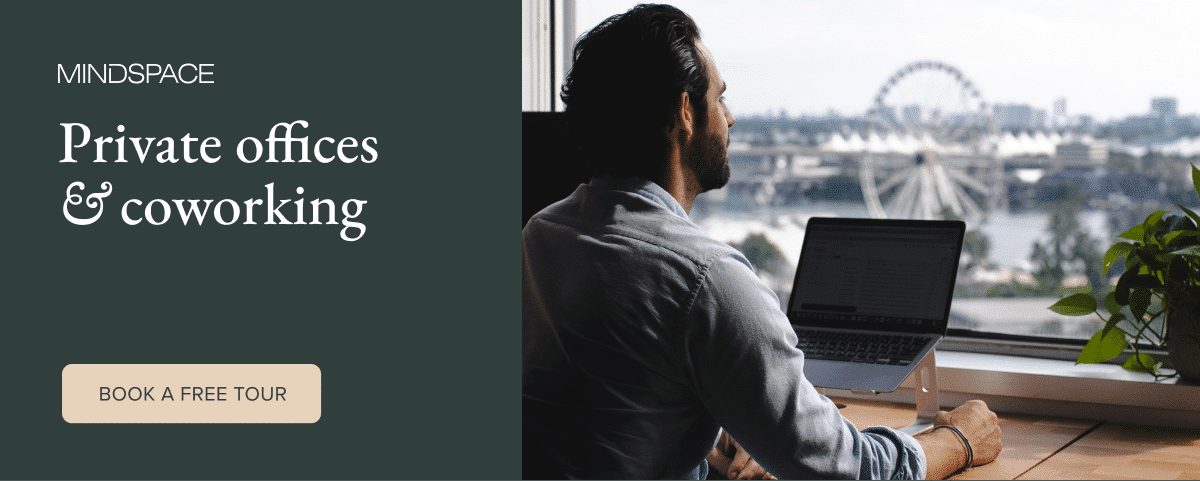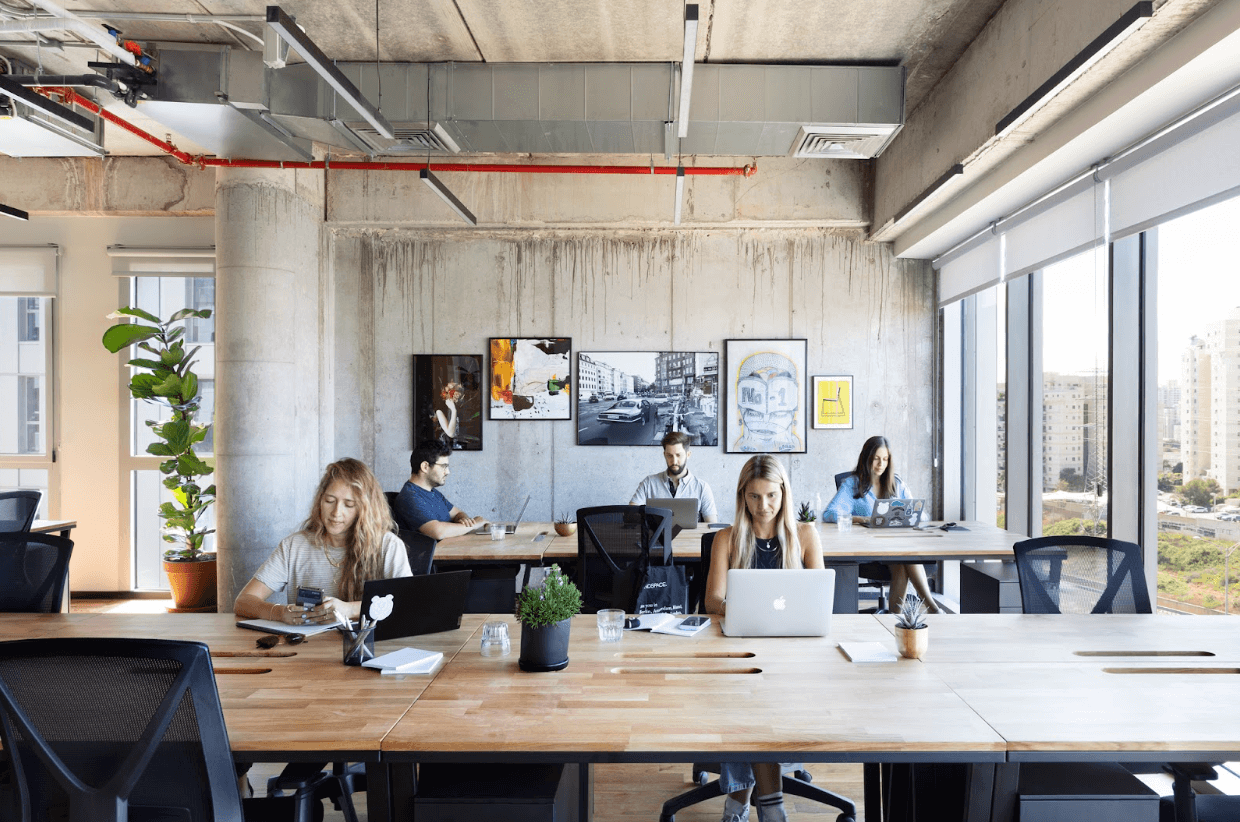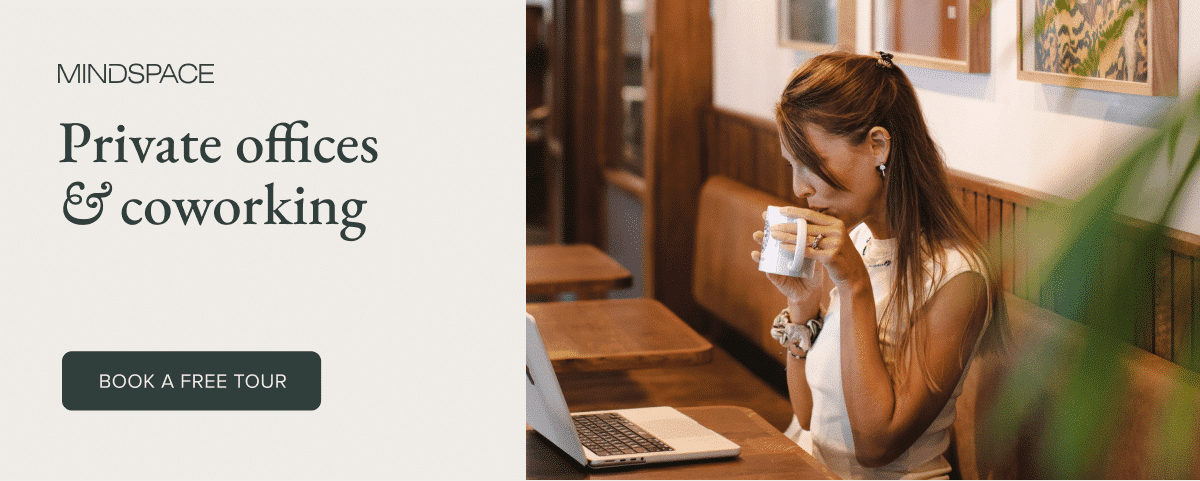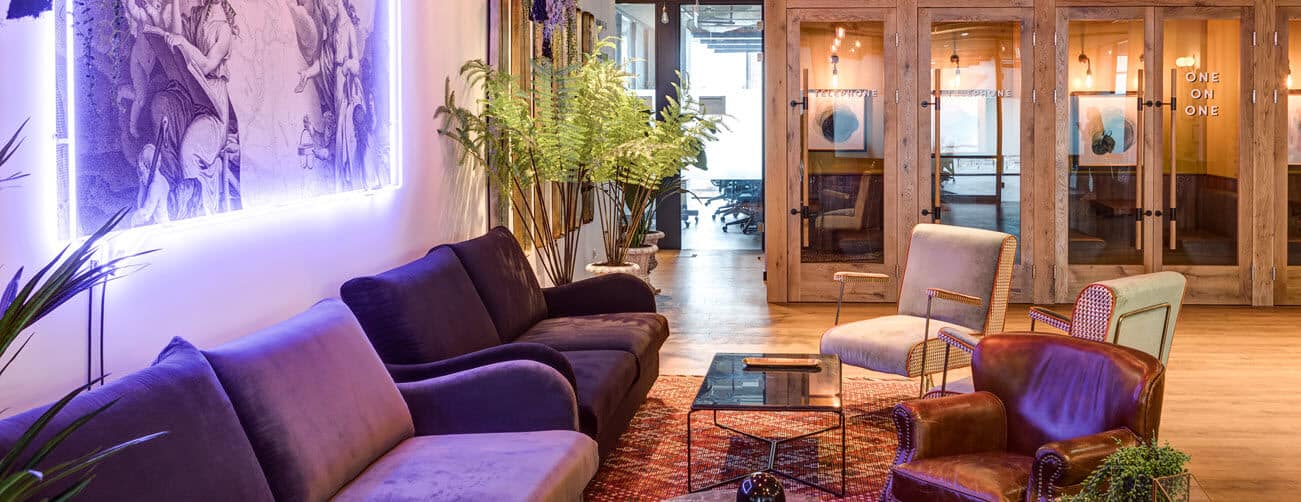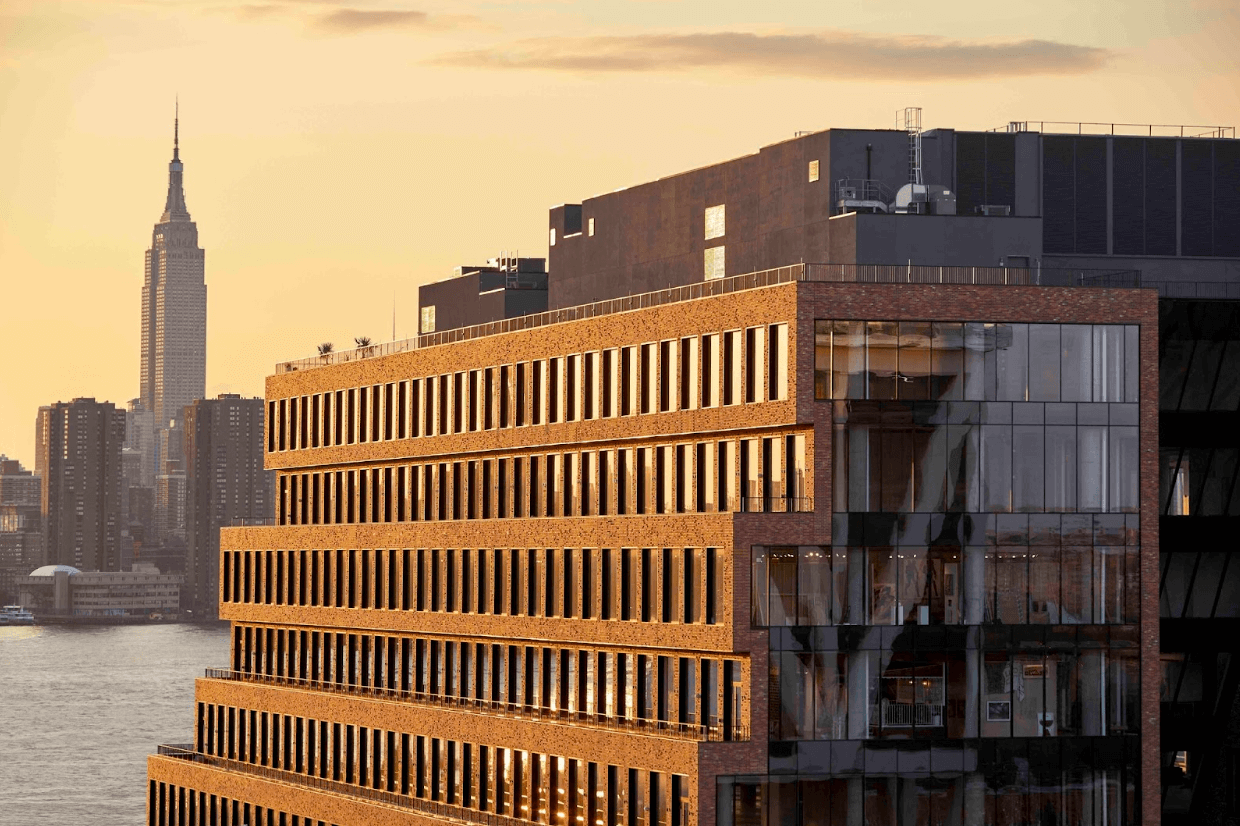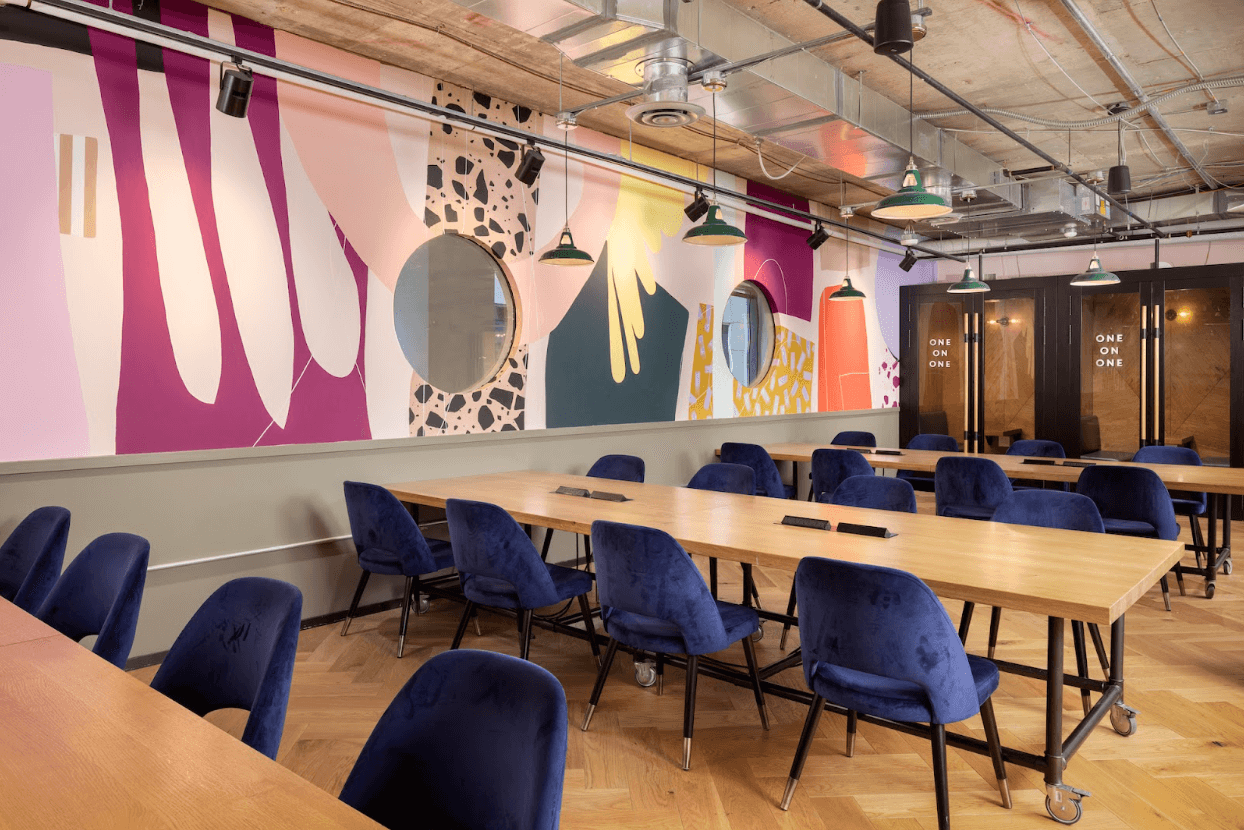
Top 10 advantages of a high-tech coworking hub
A flexible office space can play the perfect host to a high-tech hub where entrepreneurs, founders and employees of big high-tech enterprises can all network and exchange ideas. Like-minded professionals find inspiration, along with the support they might need to grow their business, all the while focusing on improving their work-life balance. Find out what the top advantages are of coworking spaces and how they foster innovation and productivity.
Why is a high-tech coworking space better than working from home?
High-tech coworking spaces like our Wynwood coworking space offer several advantages over working from home, making them a preferred choice for many professionals. Here are some reasons why high-tech coworking spaces might be better than working from home:
- Professional environment: coworking spaces provide a dedicated and professional work environment. Unlike at home, where distractions can be plentiful and the dishes in the sink are screaming out your name, coworking spaces are designed to optimize productivity. A designated work area and the absence of household responsibilities can help individuals focus better on their tasks.
- Networking opportunities: high-tech coworking spaces attract a diverse group of professionals from various industries. Do you wish to encounter fellow engineers, developers, analysts and data scientists? You’ve arrived at the right place. Such a hub creates a unique networking opportunity, fostering collaboration and the exchange of ideas.
- Access to high-tech amenities: coworking spaces such as Mindspace’s Old Street London coworking space are equipped with modern technology and amenities and services, which may not be readily available at home. These amenities often include high-speed internet, professional printers, and meeting rooms with video conferencing equipment.
Why do people thrive in coworking spaces?
Surrounded by like-minded professionals, people thrive in coworking spaces. These turnkey office solutions allow managers and founders to concentrate on the important tasks, without thinking about the overhead and logistics. At the same time, employees can find inspiration, collaboration opportunities, and wellbeing programs that encourage productivity.
The top 10 benefits of coworking spaces
1. Increased productivity
Increased productivity is one of the top benefits of coworking spaces. For instance, when sitting next to other dedicated individuals, a sense of accountability might emerge, encouraging members to to stay on track and be more productive. A change of scenery from the ordinary, day-to-day workstation can also boost productivity.
2. Network and collaboration opportunities
Whether sitting in the same open space, or exchanging ideas over a water cooler chat, networking and collaboration opportunities are abundant at coworking spaces. This is not just about getting to know your colleagues, as even business partnership can emerge from such acquaintances. Happy hours and professional events organized by flexible office spaces also present an optimal setup for networking.
3. Build structure to work-life balance
When working remotely from home, the lines between work and personal time can often blur, leading to burnout and reduced productivity. Working from an office provides a structured routine, allowing employees to create a clear demarcation between their work hours and leisure time, thus improving employee wellbeing.
Flexible office spaces take work-life balance even a step further, by presenting the ideal arrangements and the flexibility very much coveted by employees. By providing designated workspaces and amenities, coworking spaces encourage individuals to focus on their tasks during work hours and enjoy downtime in communal areas, fostering a better work-life balance and promoting overall wellbeing. Wellness programs and perks also greatly support work-life balance during office hours. This balance ultimately results in increased job satisfaction and talent retention.
4. Promotes business growth
Flexible office spaces offer a unique ecosystem to entrepreneurs, startups, and small businesses. Within these collaborative environments, individuals and teams have the opportunity to network with a diverse community of professionals from various industries, fostering potential partnerships, collaborations, and knowledge-sharing. The exchange of ideas and expertise in coworking spaces often sparks innovation and creativity, propelling businesses forward. Another advantage of a flexible office space is the ability to scale up quickly and easily by renting more workstations or customizing the office space as the company grows. The pros of flexible workspaces include their capacity to relieve members of the burden of office management tasks, allowing companies to focus their efforts on what’s truly important to grow their business.
5. Creativity boost
These spaces bring together a diverse community of professionals, each with their unique perspectives and expertise, creating a melting pot of ideas and creativity. Interactions and casual conversations with individuals from different industries and backgrounds often lead to the cross-pollination of ideas, sparking innovative solutions and fresh approaches to challenges. The absence of rigid hierarchies and the open layout of a shared space within a coworking venue foster a sense of camaraderie and encourage free-flowing exchanges, removing barriers to creativity. Moreover, the presence of creative amenities, such as comfortable breakout areas and vibrant decor, such as the artistic design at Mindspace, further enhances the ambiance and stimulates creative thinking.
6. Enjoy personal space with professional engagements
Flexible workspaces offer a plethora of solutions, accommodating businesses of all sizes – from freelancers and startups to large enterprises. For teams or individuals searching for more privacy, private offices, as well as private team suites (which can also be customized with a private entrance), cater to their needs. More coworking office solutions that allow for personal space are meeting rooms, or one-on-one booths. The communal kitchens, comfortable lounges and organized events and happy hours bring people together to socialize and network.
7. Coworking with like-minded people
Coworking spaces usually attract businesses of similar industries, such as FinTech and high-tech. Such a professional ecosystem naturally supports the formation of high-tech hubs. Mindspace coworking space in Miami, for example, is the perfect setup to mingle and share ideas with other smart and creative entrepreneurs and workers, who might also share similar core values.
8. Breaking out of your comfort zone
Flexible office spaces are a wonderful change of scenery from your desk at home or from a traditional office. They are often designed with inspirational art, and are structured to encourage collaboration and the exchange of ideas. Therefore, a coworking space could sometimes feel a bit of a challenging environment for an introvert. Yet, breaking out of your comfort zone could lead to growth and innovation.
9. Reduce loneliness; increase connection
Humans are social creatures, and working from home can get quite lonely. And if you’re a freelancer or part of just a small team, even a traditional office could keep you isolated. If there’s one lesson that we learnt the past years, it’s that going virtual is fantastic, but it’s not enough. Connecting with other flex office members allows employers and employees to thrive – with the social aspect supporting their wellbeing, and the professional aspect building collaborations and partnerships.
10. Cost-saving
Flexible office spaces allow companies to effortlessly scale up or down as necessary, paying only for the actual space they currently require. This adaptability enables businesses to avoid long-term commitments and costly fixed leases, freeing up funds for other essential areas of operation.
Additionally, coworking spaces eliminate the burden of overhead costs, as all office management responsibilities and employee wellbeing programs are conveniently included in the membership package. Businesses can relinquish worries about facility maintenance, utilities, and amenities, allowing them to focus solely on their core activities and growth. This is one of the top reasons why you should rent a fully furnished office space.
Moreover, coworking spaces foster a collaborative and creative environment, which can lead to increased productivity and innovation among employees, further adding value to the overall cost-saving benefits.
How to choose the right coworking space
Make sure the space is comfortable and conducive to productivity
A comfortable work environment is vital for a productive workday. When checking out office spaces, pay attention to the general vibe and feel, as well as to the comfort and ergonomics of the furniture. A well arranged workstation, as well as cozy sofas in the lounge areas, are some of the objects you should look at. Sitting in front of your laptop, you should feel at ease – but still alert enough to get your assignments done.
This focus on comfort and functionality is especially crucial in response to the high demand for flex office space, where professionals are seeking adaptable work environments that enhance both productivity and well-being.
Make sure the coworking space is conveniently located
A conveniently located workspace is important both for talent retention and employees’ work-life balance, and for hosting business guests, such as potential partners and customers, and company meetups and events. Mindspace prides itself on its prime locations, such as Mindspace Park Ofer Ha’Carmel in Israel, which is situated at the heart of Haifa’s high-tech hub. The scenic spot is also a plus, with its beautiful ocean views. Mindspace Münzstraße is located in the popular central area of Berlin, Mitte, within walking distance of cafes, restaurants and shops, as well as several city landmarks and efficient public transport.
Make sure the coworking space has all the amenities you need
No work is complete without some play. Firstly make sure you get the obvious amenities, such as ultra-fast wifi connection, printers and other office equipment, and cleaning services. Great coworking spaces also provide perks that support employee wellbeing and foster a community. For instance, at Mindspace Williamsburg in Brooklyn, New York City, you can also find a state-of-the-art fitness center (including a bouldering wall and Peloton bikes), as well as other Mindspace signature amenities such as delicious coffee, and global access to all the provider’s locations.
Whether you’re looking to grow as part of an innovative tech hub in Miami, Haifa, New York or Berlin, joining a high-tech ecosystem is an excellent solution for any business – from startups to well-established enterprises. These modern workspace alternatives, primely located, and buzzing with networking opportunities, this is where professionals can maximize their business potential.
In addition to high-tech coworking hubs, virtual offices can also be an invaluable resource for businesses, offering a flexible and cost-effective way to establish a professional presence and access essential services without the need for a physical workspace (read more about virtual offices).
Wish to learn more about various flexible workspace options? Here you can learn how hot desking works.


